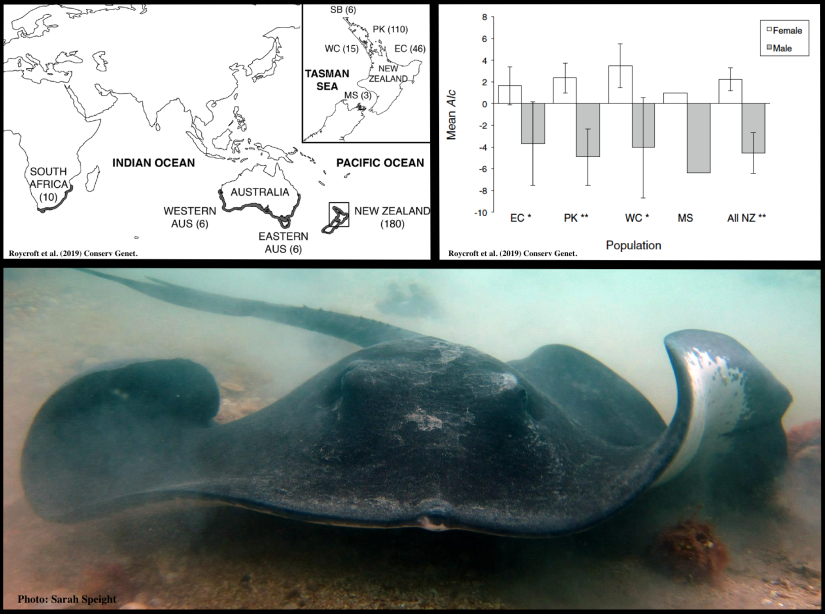This week, my honours work (and 1st first author paper!) went online in Conservation Genetics (you can find it here!). Very excited to finally share this research that was done under the wonderful supervision of Dr. Agnès Le Port and Dr. Shane Lavery, during my time at the University of Auckland.

Using nuclear and mitochondrial DNA from short-tail stingrays, we determined their population genetic structure across the southern hemisphere and showed strong evidence for male-biased dispersal within New Zealand.
We reported stronger mitochondrial DNA structure compared to nuclear DNA structure at a local scale (within New Zealand), as well as stronger structure among female individuals compared to males for both marker types. We also found that male individuals were significantly more likely than females to be migrants to the populations in which they were sampled from, suggesting that males tend to disperse a lot more than females. Our estimates suggest that male-mediated gene flow is at least five times that of female-mediated gene flow.
This pattern of ‘male-biased dispersal’ is well-described in mammals, and may be linked to the benefits that females experience by remaining in safe, known habitats for bringing up their offspring, as opposed to males, who benefit from spreading their genes. Recent studies in sharks have also reported male-biased dispersal, and our new paper adds to this growing body of research by providing evidence for the pattern in rays.
You can find a free, read-only copy here
Or you can request a downloadable .pdf copy here (via ResearchGate), and I will happily provide it!
